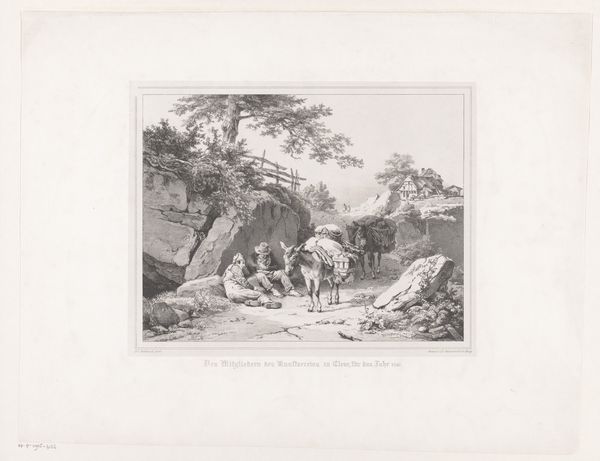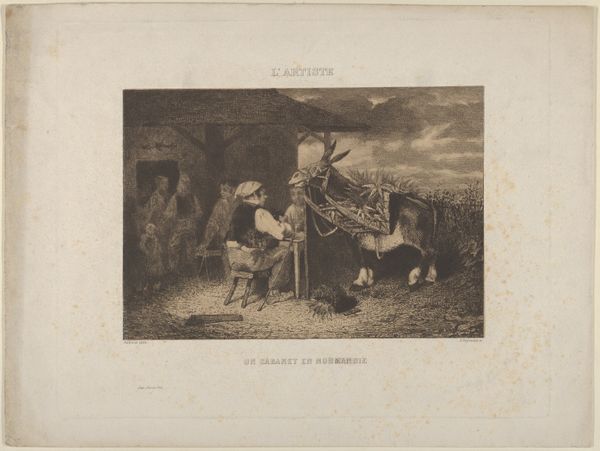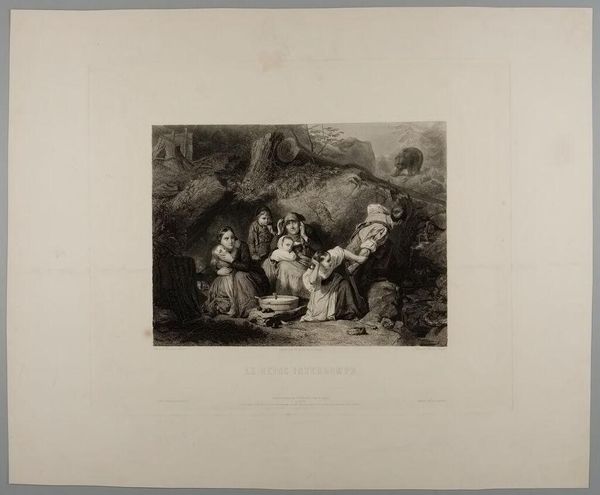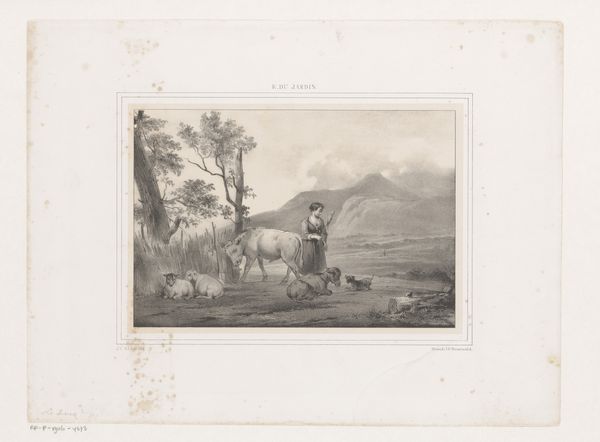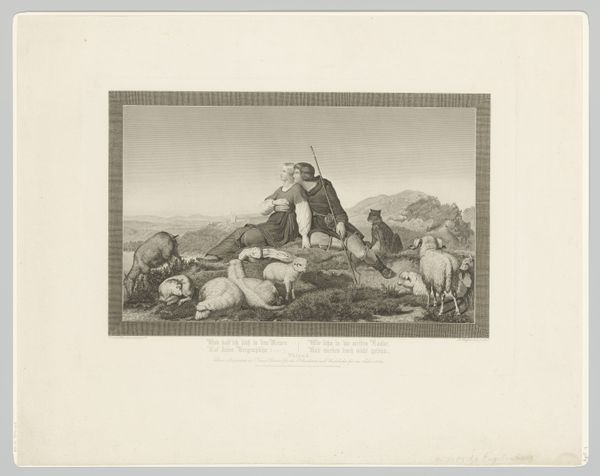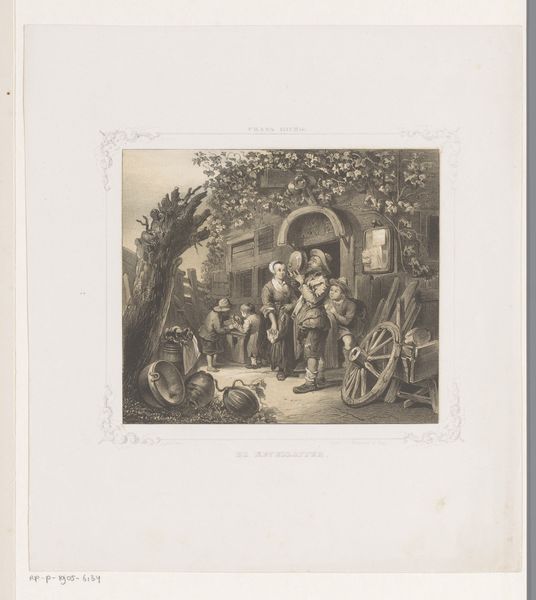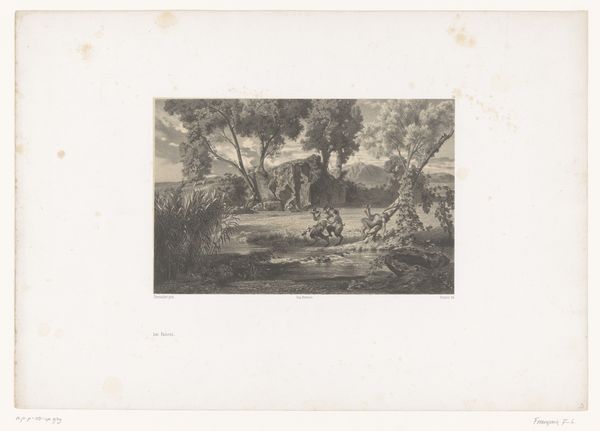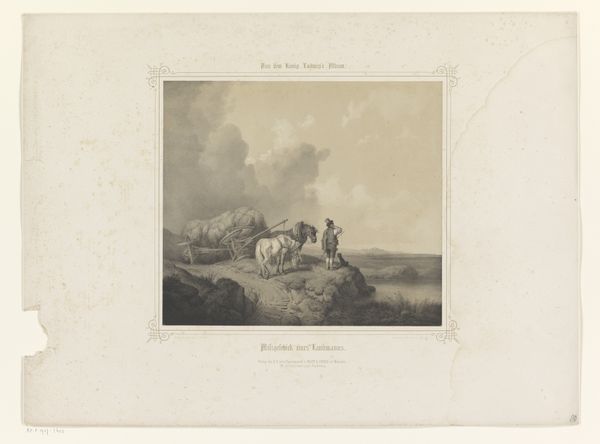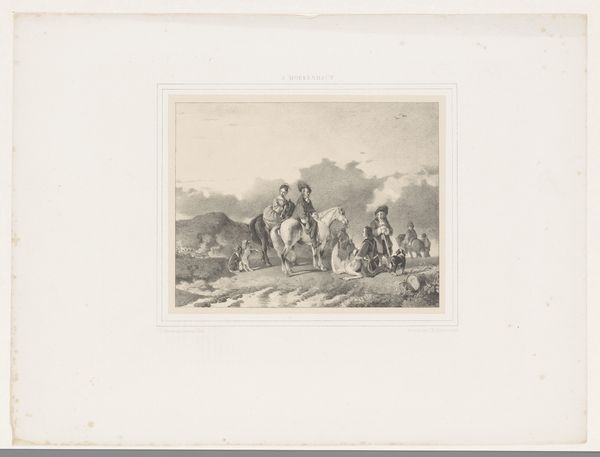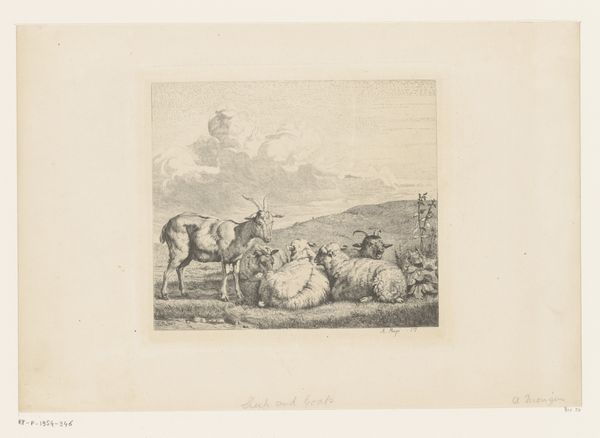
Dimensions: 285 mm (height) x 401 mm (width) (billedmaal)
This is an engraving by Adolph Kittendorff, and it exemplifies the industrialization of image-making in the 19th century. Engraving is an intaglio process, meaning the image is incised into a surface – in this case, a metal plate. The artist would have used a tool called a burin to create the lines, each one carefully considered to build up the image's tonal range. The image here is of a boy with sheep, and it speaks to an idealized vision of rural life. But what's interesting is the tension between the subject matter and the means of its production. This wasn't a unique artwork painstakingly created by hand. Instead, it could be reproduced in multiples, allowing for widespread distribution. In this way, "En dreng med får" speaks to the democratizing potential of industrialization, while also hinting at the changes that threatened traditional ways of life. The print is an artwork but also a commodity – something made possible by the labor of the artist, but also the infrastructure of 19th-century capitalism.
Comments
No comments
Be the first to comment and join the conversation on the ultimate creative platform.


